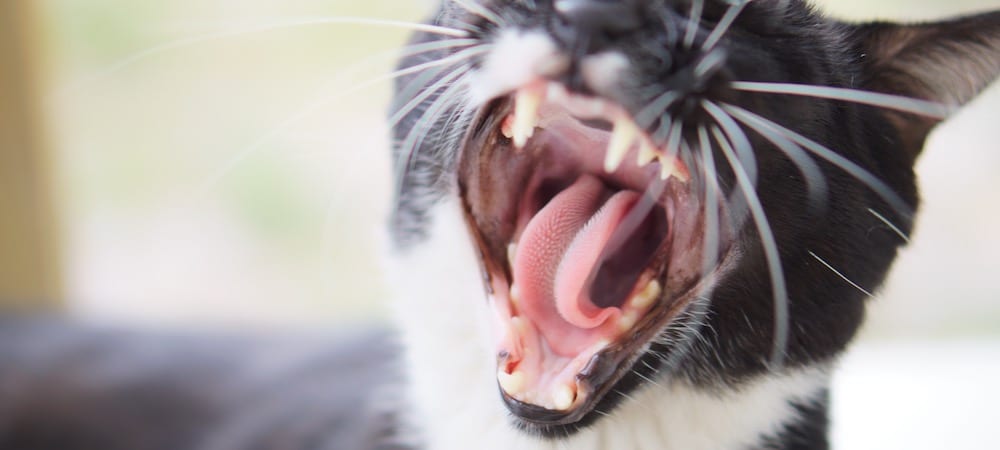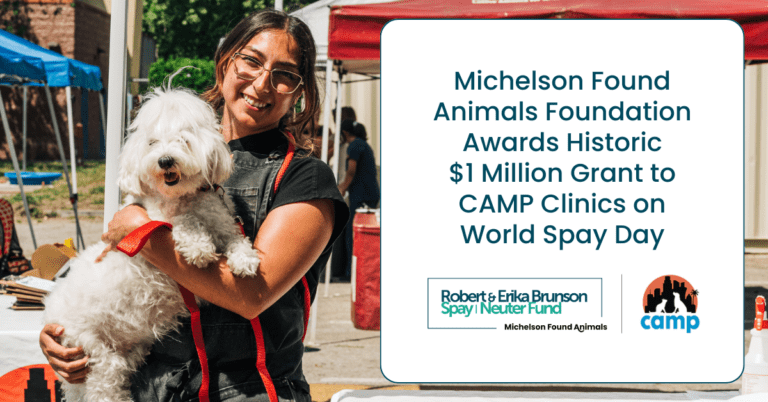Your Guide to Healthy Cat Gums

This article contains affiliate links. Found Animals receives a portion of the proceeds from every purchase made after clicking on the links. These profits go toward saving more homeless animals!
Maintaining Your Cat’s Oral Hygiene
As pet owners, we are always looking for different ways to better the lives of our animals. One of the best ways to keep an eye on your cat’s health is by maintaining good oral hygiene. Gum disease can lead to serious health issues such as infection and tooth loss. This is uncomfortable for your kitty and results in costly veterinary bills. By taking care of your cat’s gum health now, you can avoid these serious complications. Here is your guide to healthy cat gums!
Gum Disease Symptoms
Gum disease, also called gingivitis, is chronic gum inflammation that gets worse over time. It affects the gums right where the tooth and gums meet. It’s a result of accumulation of tartar, plaque and bacteria on the teeth and gum line. This leads to pain, infection and potentially loss of teeth.
Symptoms of gingivitis include:
- Bright red gums
- Bad breath
- Drooling
- Bleeding from the nose or mouth
- Having a difficult time eating
- Lack of appetite
- Chewing with just one side of the mouth or moving food around the mouth
- Face swelling
- Missing or loose teeth
- Not grooming as usual
Other signs of an unhealthy cat include pale gums. A quick test for dehydration in cats and kittens is pressing on their gums. If color doesn’t quickly return to the gum line then they are sick or dehydrated and require veterinary care immediately.
Gingivitis Prevention
The best way to prevent the pain, inconvenience and financial burden of gum disease is to keep your cat’s teeth and gums clean. Take your cat in for cleanings twice a year. X-rays, polishing and removal of diseased teeth will be done under anesthesia. Your vet might even recommend that your cat have cleanings as often as every three months.
You can also do your part by working on your cat’s oral hygiene at home. Some cats are pretty resistant to at-home dental care, so we recommend trying a bunch of different options. Eventually you’ll find something that works!
- Start with daily brushing with a toothbrush and toothpaste.
- Try a water additive to promote better breath and gum health.
- Greenies chews help cut down on tartar and plaque buildup.
- Ask your vet if they recommend a specific dental care diet.
- We also recommend tooth and gum wipes. These help remove plaque, tartar and bacteria and are free of parabens and alcohol.
Gum Disease Treatment
Gum disease may progress to such a point where your cat develops stomatitis, a condition in which there are sores in the mouth. In cases such as these, your cat might need all of their teeth removed. This treatment sounds drastic, but stomatitis is painful and makes it difficult to eat, so tooth removal provides quite a bit of relief. Plus, cats use their tongue to eat so they’ll still be able to eat food and drink water.
If mouth bacteria are the source of your cat’s woes, your vet might recommend a prescription antiseptic being added to your cat’s drinking water. They might also recommend antiseptic mouthwash or topical antibiotics. A prescription diet might also be suggested to reduce the accumulation of plaque and tartar.
As always, at-home brushing is beneficial. Cats might be resistant, but it’s worth the effort. There are plenty of different types of brushes and toothpastes available that you can try. Start slow and let your cat gradually warm up to it.


